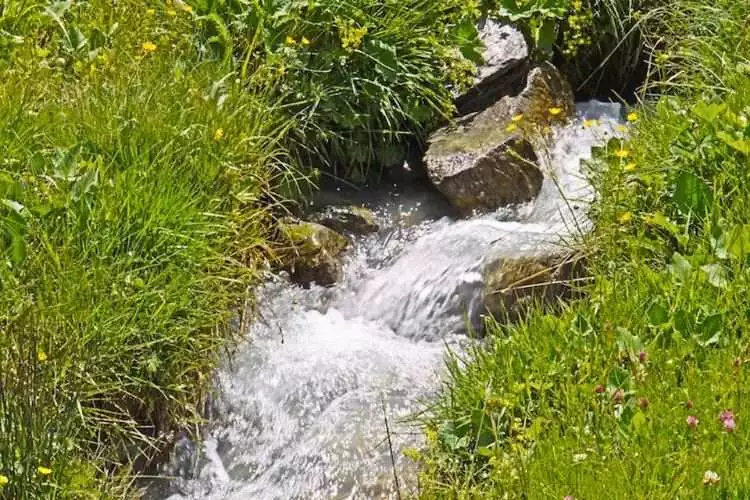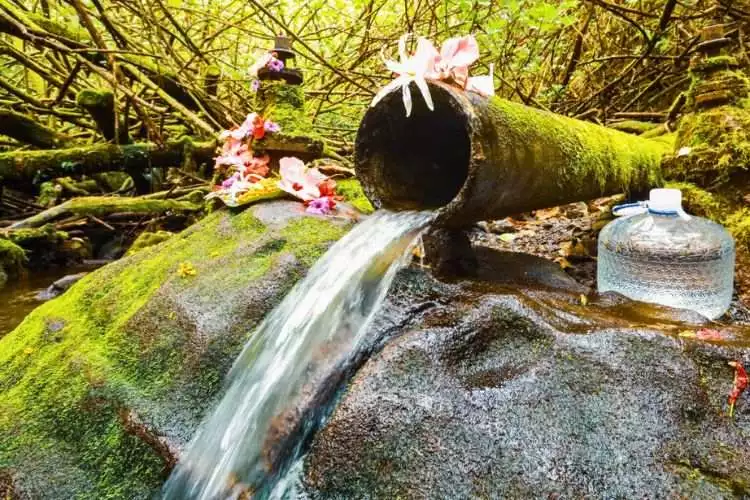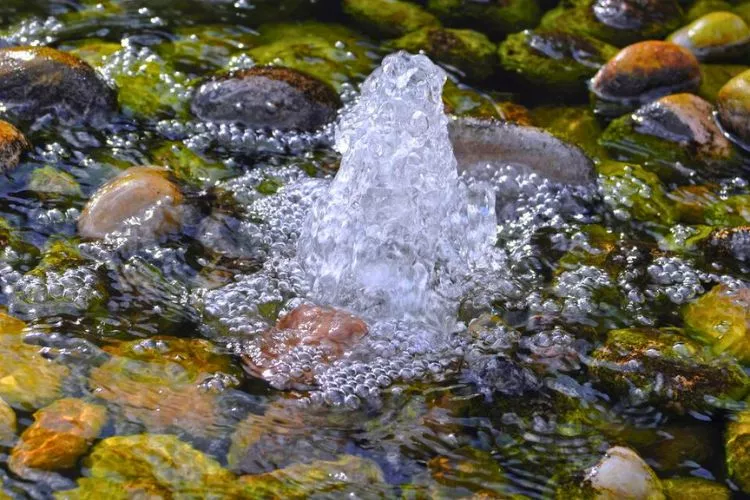A spring flows from the heart of nature, providing essential life to the ecosystems around it. However, their continuous flow can sometimes be deterred for various reasons.
This article aims to shed light on how to make a natural spring flow better, exploring practical steps, preventive measures, and ecological considerations to ensure the maintained reverence for these natural lifelines.
Read on to understand what can be done to enhance the wellness of your cherished spring.

how to make a natural spring flow better? (An Easy Guide)
Improving a natural spring’s flow is crucial for maintaining the health of surrounding ecosystems, increasing water availability, and ensuring better water quality for various uses.
The guide on how to make a natural spring flow better ahead outlines the steps and considerations for enhancing spring flow.
Understanding the Spring
Comprehending the spring’s complete ecosystem underpins any successful flow enhancement endeavor. The ‘understanding’ phase, thus, forms a cornerstone for our guide. It includes:
- Location Analysis: Begin with studying the spring’s geographical position. Its altitude, slope, orientation (north, south-facing, etc.), and proximity to other water bodies are key indicators of its natural flow patterns.
- Geological Evaluation: Springs are the result of unique geological circumstances. Knowledge about the rock types and soil conditions surrounding the spring is crucial. Some rocks and soils encourage absorption, while others promote runoff.
- Hydrology Study: Understanding the water cycle of the spring is equally important. Track the water source, whether it seeps slowly through rock or bursts from an underground river.
Assessing the Site
Identifying issues that may be impeding the spring’s flow forms the next crucial step:
- Physical Obstructions: Frequently, objects like fallen trees, garbage, or sediment buildup obstruct the spring’s flow. Always be on the lookout for such hindrances.
- Erosion Signs: Look for signs of erosion, as it indicates excessive water flow, which may deplete the spring. Erosion could manifest as bare patches of ground, conspicuous channels in the soil, or exposed tree roots.
Clearing Debris
Once you’ve identified obstructions, the logical next step becomes their removal:
- Manual Clearing: This often takes the form of manual labor—pushing branches away, lifting stones and rocks, or digging out embedded debris.
- Use of Tools: At times, equipment like shovels, rakes, or machinery might be required. Using these tools with caution is important to prevent any harm to the spring’s bio-life.
Creating a Collection Area
This is a method to concentrate and manage the spring’s flow:
- Basin Construction: Basins form simple and classic collection spots, shaped to guide the water into a central location.
- Installation of Containment Devices: Another method includes the strategic placement of larger rocks or stone walls to guide the water towards a specific area.
Managing Water Flow
Better water flow management ensures optimal use of the spring’s yield:
- Channel Creation: Creating a channel provides a smooth path for the water, preventing unnecessary losses.
- Berm Construction: If the spring’s water flow is uncontrollable, creating a berm (a flat strip of land, raised bank, or terrace bordering a river) is a good technique to distribute the water evenly.
Natural Planting
The flora around a spring significantly contributes to its health and flow:
- Choosing Native Plants: Native plants usually have deep root systems that prevent erosion, improve water absorption, and reduce runoff. They can also offer habitats for local wildlife.
- Improving Water Quality: Many native species act as biofilters, absorbing harmful pollutants and increasing water quality.
Maintenance
Ensuring a regularly scheduled maintenance routine is crucial for your spring:
- Debris Monitoring: Regular monitoring for debris accumulation prevents new blockages from forming.
- Flow Rate Checks: Regularly checking the spring’s flow rate helps track its health.
- Issue Redressal: Any recognised issues must be addressed promptly, thus preventing them from snowballing into bigger problems.
What is a good flow rate for a spring?
A good flow rate for a spring depends on various factors, such as the size of the spring, the geographical location, and the intended purpose of the water source.
There isn’t a one-size-fits-all flow rate for springs, as the ideal flow rate can vary significantly based on these factors. However, there are some general guidelines one can consider to determine an appropriate flow rate:

Spring Size
Springs can be categorized as:
- Seep (less than 0.5 gallons per minute)
- Small spring (0.5 to 10 gallons per minute)
- Medium spring (10 to 100 gallons per minute)
- Large spring (over 100 gallons per minute)
These categories are not strict, and flow rates may vary between springs. It’s important to know the size of the spring when evaluating its flow rate.
Geographical Location
The flow rate of spring can also vary by location and climate. A good flow rate in arid regions may be significantly lower than a more abundant flow rate in a forested or mountainous wet area.
Groundwater storage and precipitation also affect the spring’s flow rate.
Intended Purpose
The flow rate also depends on the specific use of the spring’s water, such as:
- Domestic Use: A flow rate of 0.5 to 2 gallons per minute may be sufficient for small households, depending on the number of occupants and water demand.
- Irrigation: Irrigation requires higher flow rates, typically ranging from 5 to 50 gallons per minute or even more, depending on the crop type and acreage.
- Livestock: The water needs of livestock can be quite diverse, with flow rates ranging from 1 to 30 gallons per minute, based on the number and type of animals.
- Recreational or Ecological Use: A natural flow rate that supports local flora and fauna without causing erosion or water scarcity is desirable for ecological balance and recreational use.
The suitability of a spring’s flow rate depends on numerous variables and objectives; it’s crucial to understand the context and requirements before determining a “good” flow rate.
Consulting a hydrologist or a watershed management expert can be helpful in gauging an ideal flow rate for your specific spring.
How to clean out a natural spring?
Cleaning a natural spring becomes essential when the spring gets clogged with natural debris or contaminated. This work is crucial to maintaining a consistent, healthy flow and water quality.
Here’s a detailed guide for cleaning a natural spring.

Identify the Source
- Definition: The first step in cleaning a spring is correctly identifying its source. It is typically the point where water naturally comes out of the ground.
- Importance: Identifying the source helps to ensure you’re working in the correct spot and prevents accidental damage to the spring’s flow.
Evaluate the Spring Site
- Evaluation Preparations: Prepare to carefully observe the surrounding environment. Look for unusual colors or smells in the water, any obvious blockages, signs of erosion, or abrupt changes in water flow.
- Data Usage: This information gives you an initial understanding of which contaminants or blockages must be addressed while cleaning the spring.
Debris Removal
- Manual Work: Manually remove loose debris like fallen leaves, branches, or rocks. Be sure to work gently to avoid accidentally damaging the spring or disturbing its natural flow.
- Using Tools: If warranted, use tools carefully to dislodge embedded debris. Tools like rakes, shovels, or grappling hooks can be handy.
Contaminant Treatment
- Identifying Contaminants: Post clearing debris, if there are still signs of water contamination (foul smell, odd coloration), it may indicate the presence of pollutants, either chemical or biological.
- Treatment Method: Depending on the severity and type of contamination, a treatment method should be applied. This task may involve water purification tablets, UV purifiers, or more complex filtering systems. In case of severe contamination, professional help is advised.
Rechecking the Flow
- Observation: After removing all debris and potential contaminants, observe the water flow rate. It should ideally be improved, and the water should appear cleaner.
- Monitoring: Continue to monitor the spring flow in the days following the cleaning. If problems persist, additional measures or expert help might be needed.
Regular Maintenance
- Frequent Checks: Regularly check the spring for debris buildup and signs of contamination. Establishing a routine maintenance schedule ensures you catch any future issues before they escalate.
- Inspection & Cleanup: Plan regular comprehensive inspections and clean-ups to keep the spring in the best possible shape.
Remember, while cleaning a natural spring, it’s essential to maintain its natural ecosystem as much as possible. Careless or hasty work could potentially harm the spring or its surrounding environment.
Always aim for a gentle, respectful approach when dealing with these precious natural resources. Your efforts can help ensure the longevity and health of the spring.
Who is responsible for natural springs?
Responsibility for natural springs can vary, but in the United States, some key government agencies have jurisdiction over managing and protecting these resources.
At the federal level, the Department of Agriculture’s Forest Service and the Department of the Interior’s Bureau of Land Management (BLM), Fish and Wildlife Service (FWS), and National Park Service (NPS) collectively manage about 95% of federal lands and waters, including springs.
The U.S. Geological Survey (USGS) researches and documents information on springs and other water cycles.

Moreover, the Natural Resources Conservation Service, a government agency, works with landowners for conservation planning and assistance to foster healthy ecosystems.
At the state level, Departments of Natural Resources and environmental protection agencies oversee springs and other natural resources within their jurisdictions.
In summary, responsibility for natural springs typically falls to multiple government agencies at different levels, depending on the location and context.
Conclusion:
Enhancing the flow of a natural spring involves a multi-step process that includes understanding its unique ecosystem, assessing the site for issues, clearing debris, managing water flow, and maintaining its natural habitat.
Regular maintenance plays a crucial role in keeping the spring healthy and well-functioning.
By adopting these practices and working in harmony with nature, we can optimize water flow, preserve essential resources, and protect the ecosystem’s delicate balance surrounding natural springs.


